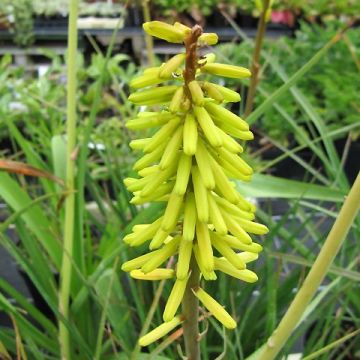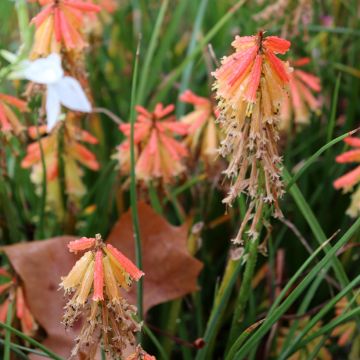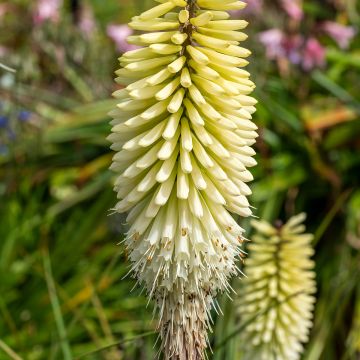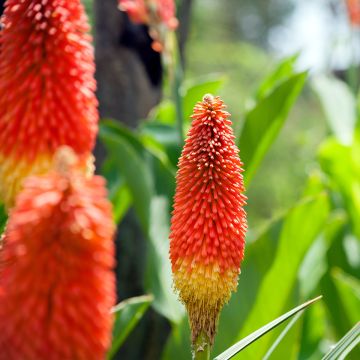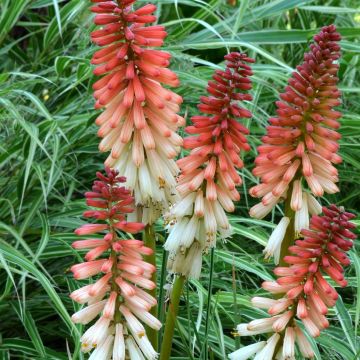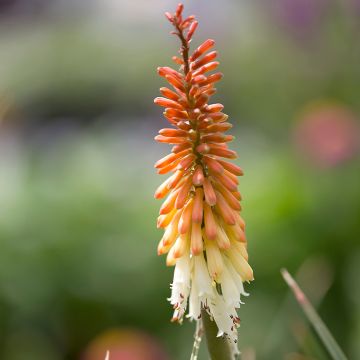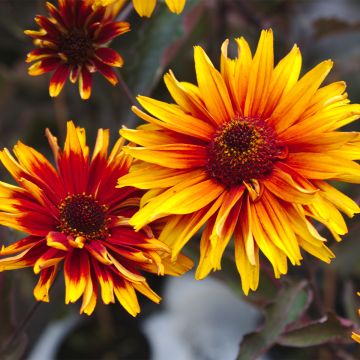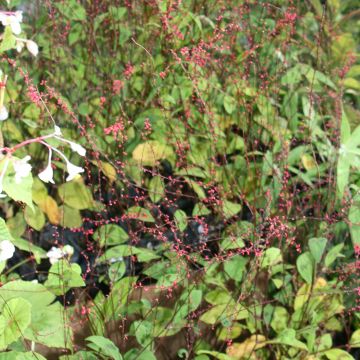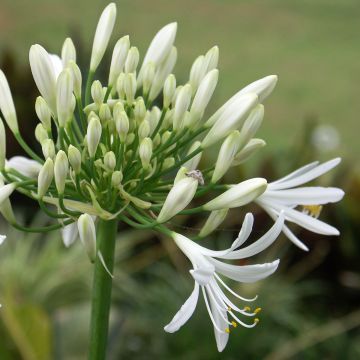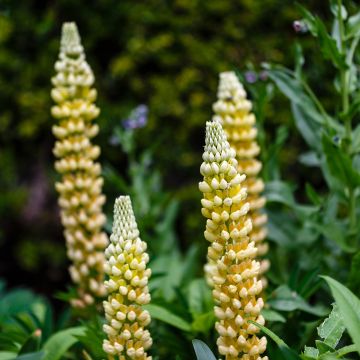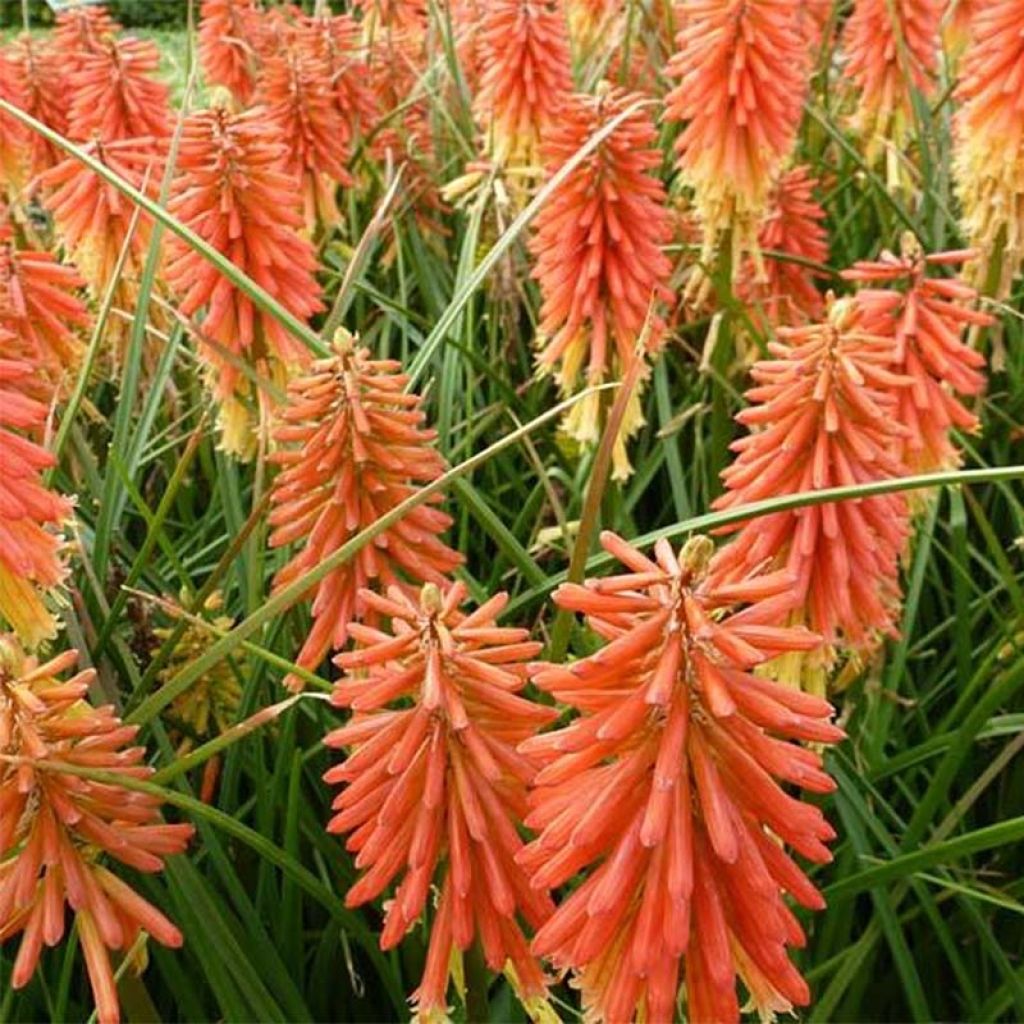

Kniphofia uvaria Redhot Popsicle - Red Hot Poker
Kniphofia uvaria Redhot Popsicle - Red Hot Poker
Kniphofia x uvaria Redhot Popsicle
Red Hot Poker, Tritoma, Torch Lily, Poker Plant
This item cannot be shipped to the selected country
Delivery charge from €5.90
More information
Schedule delivery date,
and select date in basket
This plant carries a 12 months recovery warranty
More information
We guarantee the quality of our plants for a full growing cycle, and will replace at our expense any plant that fails to recover under normal climatic and planting conditions.
From €5.90 for pickup delivery and €6.90 for home delivery
Express home delivery from €8.90.
Does this plant fit my garden?
Set up your Plantfit profile →
Description
Kniphofia 'Redhot Popsicle' is part of a series of small-sized tritoma or red-hot pokers with a generous and long-lasting summer flowering. This excellent variety blooms in successive waves throughout summer, in a bright range of vermilion-red and salmon-orange. It forms a compact and low clump of very fine, grass-like shiny foliage that remains attractive all season. Its numerous inflorescences are dense spikes of small pendulous bells where butterflies and bees gather. It is a robust and cheerful perennial. Plant this water-saving red-hot poker in full sun, in well-drained soil.
Kniphofia 'Redhot Popsicle' belongs to the Asphodelaceae family. This compact variety is a recent hybrid obtained by cross-breeding various species native to southern and eastern Africa. It is a deciduous perennial with fleshy rhizomes, whose above-ground growth dries up in winter. It forms an upright, somewhat tousled clump with tough, very fine, slightly sharp grass-like leaves, reaching 50cm (20in) in height and 40 to 50cm (16 to 20in) in width. The flowering is particularly long, occurring from May-June to September, rising 70 to 80cm (28 to 32in) on bare stems above the foliage. The honey-bearing and nectar-rich inflorescence is a dense terminal cluster of tubular and pendulous flowers. They are initially bright red and evolve towards orange, in a gradient from top to bottom of the spike. The foliage forms a beautiful airy bunch, decorative outside of the flowering season.
Their exotic appearance already charmed our grandmothers. The new tritomas, with their numerous brightly coloured flowers, are even more decorative. Tritomas are surprising plants, yet very sturdy. They light up any garden with their colourful torches. Kniphofia 'Redhot Popsicle' will blend well in a large rock garden, paired with magenta red hollyhocks, common sage, or the blue-flowered Anchusa azurea 'Loddon Royalist', for example. Plant it with Penstemon 'Husker Red', Anthemis tinctoria 'Sauce Hollandaise', and Nepeta 'Purrsian Blue'. Tritomas pair well with perennials with light blooms. They can also be planted individually on a lawn, along a path by mixing colours, or combined with dwarf bamboos, compact cannas, and Lobelia tupa to create an exotic atmosphere.
Report an error about the product description
Kniphofia uvaria Redhot Popsicle - Red Hot Poker in pictures
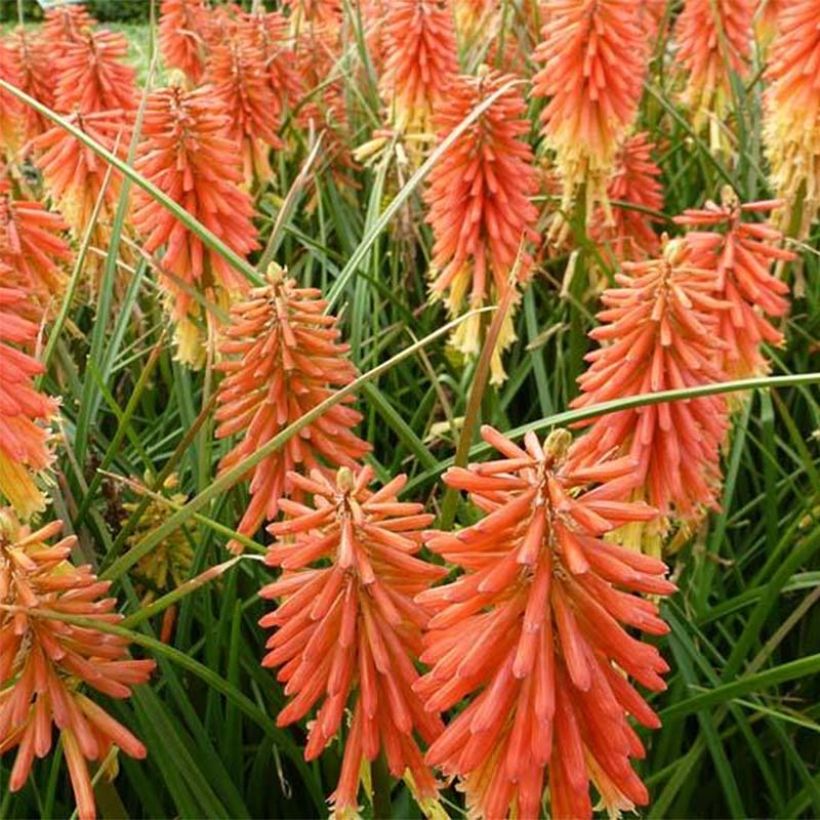

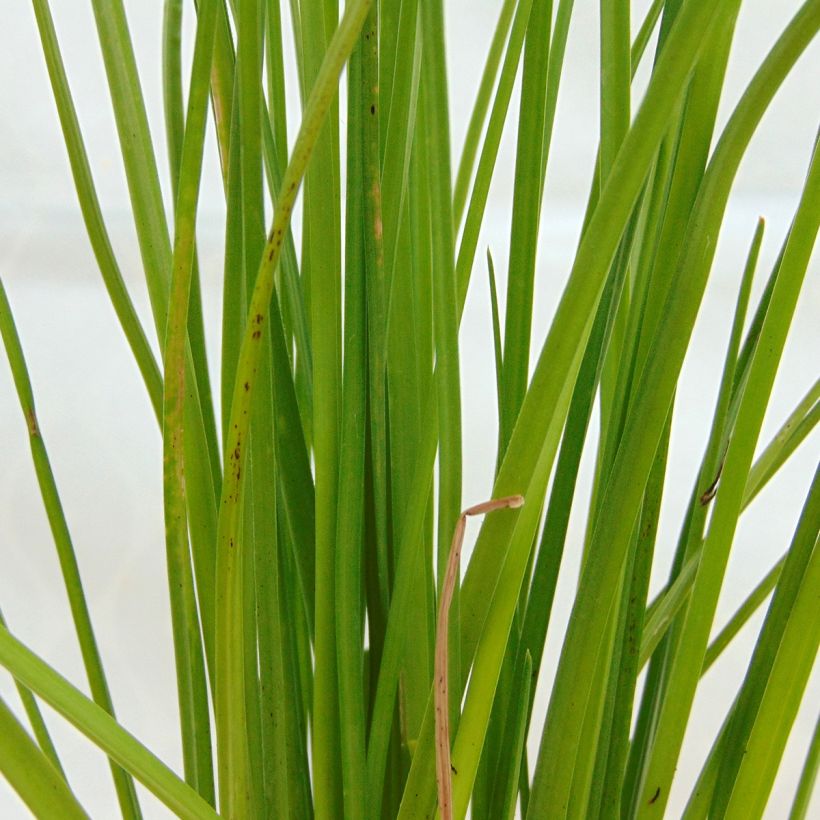

Flowering
Foliage
Plant habit
Botanical data
Kniphofia
x uvaria
Redhot Popsicle
Asphodelaceae
Red Hot Poker, Tritoma, Torch Lily, Poker Plant
Cultivar or hybrid
Other Kniphofia - Red-Hot Pokers
Planting and care
Plant Kniphofia 'Redhot Popsicle' in any well-drained, loose soil in full sun. It particularly thrives in slightly loamy soils and is sensitive to heavy, waterlogged soils in winter. Make sure it does not lack water during the summer, as this is when it needs it most to support its flowering. In dry climates, the plant will flower earlier (as early as May) but will go into dormancy in summer. A thick mulch can be applied around the stump to protect it during particularly cold winters. This plant tolerates wind and the specific conditions of coastal areas. Apply organic fertiliser at the start of the growing season. Remove wilted stems and flowers in late autumn. This plant requires no further care.
Planting period
Intended location
Care
This item has not been reviewed yet - be the first to leave a review about it.
Summer flowering perennials
Haven't found what you were looking for?
Hardiness is the lowest winter temperature a plant can endure without suffering serious damage or even dying. However, hardiness is affected by location (a sheltered area, such as a patio), protection (winter cover) and soil type (hardiness is improved by well-drained soil).

Photo Sharing Terms & Conditions
In order to encourage gardeners to interact and share their experiences, Promesse de fleurs offers various media enabling content to be uploaded onto its Site - in particular via the ‘Photo sharing’ module.
The User agrees to refrain from:
- Posting any content that is illegal, prejudicial, insulting, racist, inciteful to hatred, revisionist, contrary to public decency, that infringes on privacy or on the privacy rights of third parties, in particular the publicity rights of persons and goods, intellectual property rights, or the right to privacy.
- Submitting content on behalf of a third party;
- Impersonate the identity of a third party and/or publish any personal information about a third party;
In general, the User undertakes to refrain from any unethical behaviour.
All Content (in particular text, comments, files, images, photos, videos, creative works, etc.), which may be subject to property or intellectual property rights, image or other private rights, shall remain the property of the User, subject to the limited rights granted by the terms of the licence granted by Promesse de fleurs as stated below. Users are at liberty to publish or not to publish such Content on the Site, notably via the ‘Photo Sharing’ facility, and accept that this Content shall be made public and freely accessible, notably on the Internet.
Users further acknowledge, undertake to have ,and guarantee that they hold all necessary rights and permissions to publish such material on the Site, in particular with regard to the legislation in force pertaining to any privacy, property, intellectual property, image, or contractual rights, or rights of any other nature. By publishing such Content on the Site, Users acknowledge accepting full liability as publishers of the Content within the meaning of the law, and grant Promesse de fleurs, free of charge, an inclusive, worldwide licence for the said Content for the entire duration of its publication, including all reproduction, representation, up/downloading, displaying, performing, transmission, and storage rights.
Users also grant permission for their name to be linked to the Content and accept that this link may not always be made available.
By engaging in posting material, Users consent to their Content becoming automatically accessible on the Internet, in particular on other sites and/or blogs and/or web pages of the Promesse de fleurs site, including in particular social pages and the Promesse de fleurs catalogue.
Users may secure the removal of entrusted content free of charge by issuing a simple request via our contact form.
The flowering period indicated on our website applies to countries and regions located in USDA zone 8 (France, the United Kingdom, Ireland, the Netherlands, etc.)
It will vary according to where you live:
- In zones 9 to 10 (Italy, Spain, Greece, etc.), flowering will occur about 2 to 4 weeks earlier.
- In zones 6 to 7 (Germany, Poland, Slovenia, and lower mountainous regions), flowering will be delayed by 2 to 3 weeks.
- In zone 5 (Central Europe, Scandinavia), blooming will be delayed by 3 to 5 weeks.
In temperate climates, pruning of spring-flowering shrubs (forsythia, spireas, etc.) should be done just after flowering.
Pruning of summer-flowering shrubs (Indian Lilac, Perovskia, etc.) can be done in winter or spring.
In cold regions as well as with frost-sensitive plants, avoid pruning too early when severe frosts may still occur.
The planting period indicated on our website applies to countries and regions located in USDA zone 8 (France, United Kingdom, Ireland, Netherlands).
It will vary according to where you live:
- In Mediterranean zones (Marseille, Madrid, Milan, etc.), autumn and winter are the best planting periods.
- In continental zones (Strasbourg, Munich, Vienna, etc.), delay planting by 2 to 3 weeks in spring and bring it forward by 2 to 4 weeks in autumn.
- In mountainous regions (the Alps, Pyrenees, Carpathians, etc.), it is best to plant in late spring (May-June) or late summer (August-September).
The harvesting period indicated on our website applies to countries and regions in USDA zone 8 (France, England, Ireland, the Netherlands).
In colder areas (Scandinavia, Poland, Austria...) fruit and vegetable harvests are likely to be delayed by 3-4 weeks.
In warmer areas (Italy, Spain, Greece, etc.), harvesting will probably take place earlier, depending on weather conditions.
The sowing periods indicated on our website apply to countries and regions within USDA Zone 8 (France, UK, Ireland, Netherlands).
In colder areas (Scandinavia, Poland, Austria...), delay any outdoor sowing by 3-4 weeks, or sow under glass.
In warmer climes (Italy, Spain, Greece, etc.), bring outdoor sowing forward by a few weeks.

































